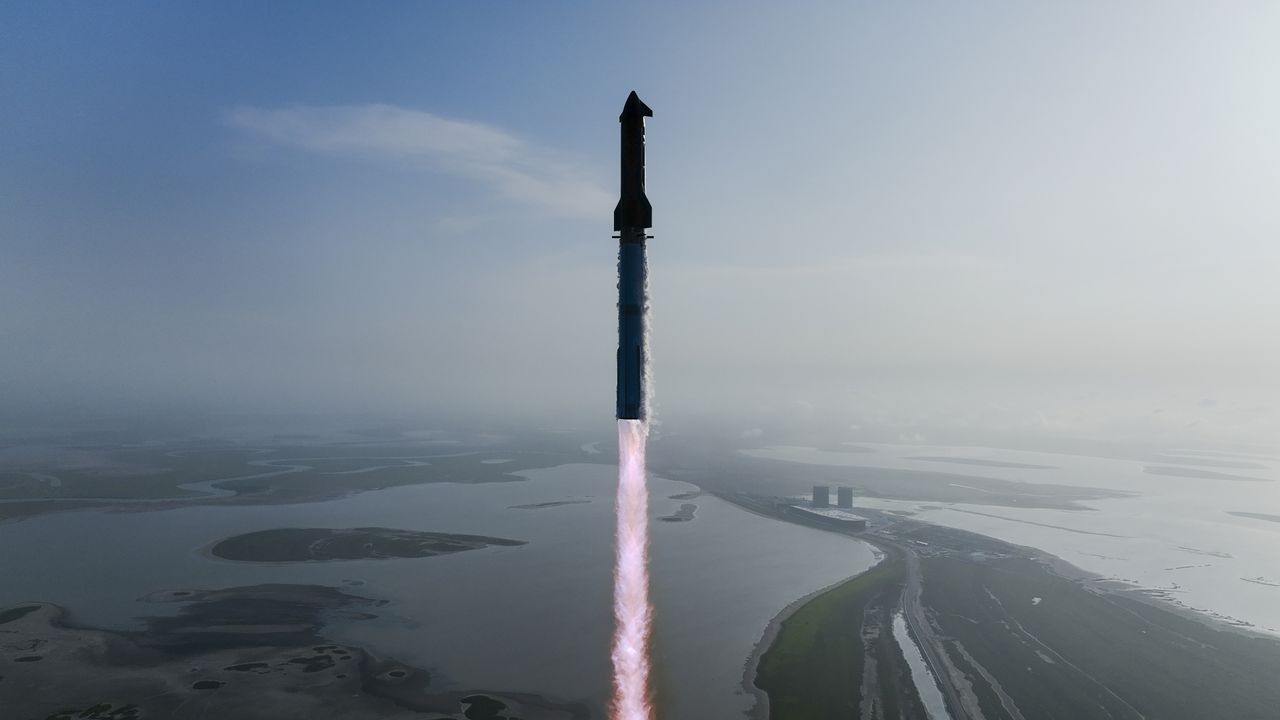SpaceX has announced plans to launch the tenth integrated test flight of its Super Heavy Starship vehicle as early as August 24, 2025. Liftoff is scheduled from the company’s manufacturing and test site at Starbase in Texas during a launch window that begins at 19:30 EDT (23:30 GMT). This announcement was made via a post on X on August 15, marking a slight delay from earlier estimates offered by SpaceX CEO Elon Musk in mid-July, who predicted that the next launch would occur in “about three weeks.”
This upcoming test flight represents a critical moment in the Starship program, as it follows three previous flights in 2025 that ended with the loss of the upper stage. Each failure impacts the timeline for Starship, which is being developed as a lunar lander for NASA’s Artemis 3 mission, aimed at returning astronauts to the Moon in 2027.
The fully stacked configuration of the Super Heavy booster and the Starship upper stage reaches a height of approximately 394 feet (120 meters). For Flight 10, SpaceX will utilize Booster 16 and Ship 37, both of which are Block 2 variants of the evolving launch vehicle. Each mission features incremental upgrades as part of SpaceX’s ongoing development strategy.
Flight 10 follows the recent Flight 9, which launched on May 27 but concluded with the upper stage disintegrating approximately 45 minutes into its flight. Just weeks later, on June 18, a static test fire at Starbase resulted in an explosion that destroyed Ship 36, the vehicle initially intended for Flight 10, and caused damage to SpaceX’s testing infrastructure.
With investigations into these mishaps completed, the Starship Flight 10 is set to proceed with new mission objectives. Once the vehicle reaches space and stage separation occurs, Starship will deploy eight mass simulators for Starlink satellites, conduct an in-space relight of its Raptor engines, and attempt a controlled splashdown in the Indian Ocean. Meanwhile, Booster 16 will alter its trajectory for a controlled splashdown in the Gulf of Mexico.
Despite the challenges faced in previous flights, several test flights have achieved partial success. Notably, SpaceX successfully caught a Super Heavy booster with its launch tower known as “Mechazilla” and refurbished it for reuse. However, there remains a significant gap in meeting all mission objectives from launch to landing.
SpaceX’s development of Starship is integral to Musk’s vision of making human life multiplanetary by facilitating missions to Mars. Additionally, the Starship program is central to NASA’s Artemis initiative, which aims to send astronauts back to the Moon for extended missions. As the countdown to Flight 10 continues, SpaceX remains focused on advancing its ambitious goals in space exploration.
